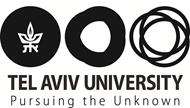Professor, Department of Pathology, Sackler Faculty of Medicine
Prof. Koret Hirschberg

Positions
Koret Hirschberg
BIOGRAPHICAL SKETCH
NAME: Koret, Hirschberg POSITION TITLE: Associate Professor
EDUCATION/TRAINING
|
INSTITUTION AND LOCATION |
DEGREE
|
Completion Date |
FIELD OF STUDY
|
|
Tel Aviv University |
B.Sc |
1989 |
Biology |
|
Weizmann Institute Weizmann Institute NIH/NICHD/ CBMB |
M.Sc Ph.D. Ph.D. Postdoctoral fellow |
1991 1996 1996-2001 |
Biochemistry & Parasitology Biochemistry & Neurobiology Cell Biology |
A. Personal Statement (main scientific achievement)
1. Throughout my years as a PI, I have studied protein membrane interactions, focusing on the early secretory pathway in living intact cells. Our work generated a dogma shift in the field that is changing the way we understand how proteins are sorted, concentrated, and transported through the secretory pathway.
2. Our work on the MARVEL protein family has revealed the mechanisms of how proteins can form and stabilize functional membrane domains/lipid rafts. In so doing, we have contributed to the disentangling of a decade-long debate as to the existence of membrane domains and their function.
3. The Rab1 small GTPase is a master regulator of ER export. It is associated with Infectious, genetic, and neurodegenerative diseases. We recently found that it is involved in lipid droplet growth and metabolism, providing insight into a novel mechanism of pathogenesis.
B. Positions, Scientific Appointments, and Honors
Positions and Employment
2001-2010 Graduate School MSc. thesis committee
2010-2013 Chair, Faculty of Medicine Interdepartmental –Equipment Committee
2009-2014 Faculty of Medicine Search Committee
2010-2020 Faculty of Medicine Fellowships Committee
2010-present Faculty of Medicine Graduate School steering committee
2010-2025 Chair, Faculty of Medicine student affairs committee
2010-2013 Scientific board of the Sackler cellular & molecular imaging center
2009-2010 Tel Aviv University Scientific Services committee
2010-2018 Head of Bio-Medical BSc program
2017-Present Associate Professor, Department of Pathology
2007-2017 Senior Lecturer, Department of Pathology
Other Experience and Professional Memberships
2002-present Member, Israel Society for Cell Biology
2001-present Member, American Society of Cell Biology
Honors
2001 NIH Research Excellence prize.
1996 Human Frontiers Science Foundation long-term fellowship.
Research
Intracellular Membrane Trafficking
Our laboratory focuses on investigating the protein and membrane interactions that delineate membrane transport processes. We are especially interested in the functions of cargo recognition, concentration, and targeted delivery to distinct cellular membranes. All transport processes use the membrane as their final substrate, for example: fusion, budding, generation of distinct domains, and the establishment of curvature. Combined, these functions shape the cellular transport machinery, one of the major systems that maintain homeostasis, communication, and response to the external environment in health and disease.
To understand these processes in detail, one must recognize that protein–protein as well as protein-lipid interactions are involved. Studying the latter, namely protein-lipid interaction, is challenging since these interactions are less specific and complex experimental systems are required. In other words, to study the association between a protein to its proximal native lipid environment, membranes cannot be disrupted or solubilized.
In our laboratory, we combine traditional biochemical analysis with live cell imaging and quantitative kinetic modeling to gather information on the dynamic features of the cellular secretory transport machinery. Experiments are carried out using the expression of fluorescent protein-tagged proteins in living intact cells using laser scanning confocal microscopes. We use a range of state-of-the-art experimental setups such as: Time-lapse imaging, three-dimensional reconstruction, multicolor imaging, photobleaching/photoactivation-based–based manipulations, and Bi-Molecular fluorescent complementation (BiFC). Kinetic modeling and simulation software is often used to extract values of kinetic coefficients or to perform model testing from the wealth of information hidden in the image sequences.
Publications
Wagner V, Elke Stadelmeyer E, Riederer M, Regitnig P, Gorischek A, DeVvaney T, Schmidt K, Tritthart HA, Hirschberg K, Bauernhofer T, Schreibmayer W. Cloning and characterization of GIRK1 variants resulting from alternative RNA editing of the KCNJ3 gene transcript in a human breast cancer cell line. J Cell Biochem. J Cell Biochem.110, 598-608, 2010.
Alfaguter-Azoulay I, Yaffe Y, Licht-Murava A, Urbanska M, Jaworski J, Pietrokovski S, Hirschberg K, Eldar-Finkelman H. Distinct molecular regulation of GSK-3alpha isozyme controlled by its N-terminal region. Functional role in calcium/calpain signaling. J Biol Chem. 286, 15, 13470-80. 2011.
Benjamin S, Weidberg H, Rapaport D, Pekar O, Nudelman M, Segal D, Hirschberg K, Katzav S, Ehrlich M, Horowitz M. EHD2 mediates trafficking from the plasma membrane by modulating Rac1 activity. Biochemical J. 439:433-42. 2011.
Yaffe Y, Shepshelovitch J, Yeheskel A, Shmerling H, Kwiatek JM, KaGaus K, Pasmanik-Chor M, Hirschberg K. The MARVEL transmembrane domain of Occludin mediates oligomerization and targeting to the basolateral surface in epithelia. J Cell Sci. 125:3545-56. 2012.
Nevo-Yassaf I, Yaffe Y, Asher M, Ravid O, Eizenberg S, Henis YI, Nahmias Y, Hirschberg K, Sklan EH. A role for TBC1D20 and Rab1 in Hepatitis C virus replication via interaction with LD bound NS5A. J Virol, 86:6491-502. 2012
David N, Yaffe Y, Hagoel L, Elazar M, Glenn JS, Hirschberg K, Sklan EH. The interaction between the Hepatitis C proteins NS4B and NS5A is involved in viral replication. Virology. 475C:139-149. 2014
Yaffe Y, Hagger I , Nevo Yassaf I, Shepshelovitch J, Sklan EH, Elkabetz Y, Yeheskel A, Pasmanik-Chor M, Benzing C, Macmillan A, Gaus K, Eshed-Eisenbach Y, Peles E, Hirschberg K. The myelin proteolipid Plasmolipin, forms oligomers and induces liquid ordered membranes in the Golgi apparatus. J. Cell Science 128, 2293-302. 2015

